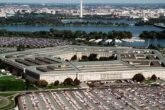October 29, 2018
Surviving the U.S. Withdrawal From the Iran Nuclear Deal: What We Do—and Don’t—Need to Worry About
In a September interview with Germany’s Der Speigel, Iranian Foreign Minister Mohammad Javad Zarif stated that if Europe could not meet Iran’s demands for sustained economic benefits following the U.S. withdrawal from the nuclear deal, Tehran would be within its rights to resume some of its nuclear activities. In other words, Iran could expand its nuclear program without walking away from the agreement, known as the Joint Comprehensive Plan of Action (JCPOA). While it is unclear whether this was mere bluster from Tehran’s top diplomat — and whether the remaining parties to the deal would agree with his interpretation of its text — it is the latest in a series of threats and announcements, since the United States exited the JCPOA, that Tehran remains ready to quickly resume activities halted under the agreement.
Of course, such rhetoric is primarily meant to put pressure on Europe and other remaining deal participants to offset U.S. economic sanctions. Conventional wisdom is that Iran appears willing to stay in the deal, at least for now.
But this does not mean the United States should not take Iran’s threats seriously or refrain from planning for their occurrence. Indeed, U.S. sanctions on Iran’s oil and banking sectors — which are the sanctions most likely to put the squeeze on Iran’s economy — don’t go into effect until November 5, at which point Iran could carry out its threats. In addition, while Europe has taken a few steps to try and blunt the impact of the U.S. pressure campaign and save the deal, such measures will probably have a small effect on reducing the economic pain on Iran. Thus, there is ample reason to worry that Iran could still make good on these threats, sparking an escalatory cycle and increasing the risk of miscalculation and conflict.
This would not be the first time. Beginning in late 2005, Iran removed International Atomic Energy Agency (IAEA) seals and began to resume its fuel cycle activities following a pause in response to the exposure of its then-covert uranium enrichment and reactor-related facilities. Over the next decade, as international pressure increased — including threats of military action — Iran responded by ramping up its program. It is entirely plausible that Iran might do so again to regain negotiating leverage as sanctions begin to bite.
During my time as a senior analyst in the intelligence community and a policymaker at the National Security Council, I watched the pendulum swing from escalation, to negotiations and the completion of the JCPOA, and back to the U.S. withdrawal and resumption of pressure and threats to try and force a new deal. The United States may now need to re-learn old lessons.
Read the full article in War on the Rocks.
More from CNAS
-
DEFAERO Strategy Series [Apr 09, 25] CNAS' Becca Wasser and Phil Sheers on Revitalizing the U.S. Defense Industrial Base
On this episode of the Defense & Aerospace Report Strategy Series, sponsored by General Atomics Aeronautical Systems, Becca Wasser and Phil Sheers of the Center for a New Amer...
By Becca Wasser & Philip Sheers
-
From Production Lines to Front Lines
Executive Summary The U.S. defense industrial base (DIB) is struggling to meet the demands of the current strategic environment—let alone prepare for a potential conflict agai...
By Becca Wasser & Philip Sheers
-
The Pentagon’s Endangered Brain Trust
In this environment, sound assessments of emerging threats and new ideas to counter them will be especially vital....
By Dr. Andrew Krepinevich, Jr.
-
Siliconsciousness: The AI Competition: Public Policy Strategies: Part 1
This episode comprises the first part of our special event, “The AI Competition: Public Policy Strategies”. The event, co-hosted by MIT Technology Review, brings together some...
By Dr. ED McGrady




